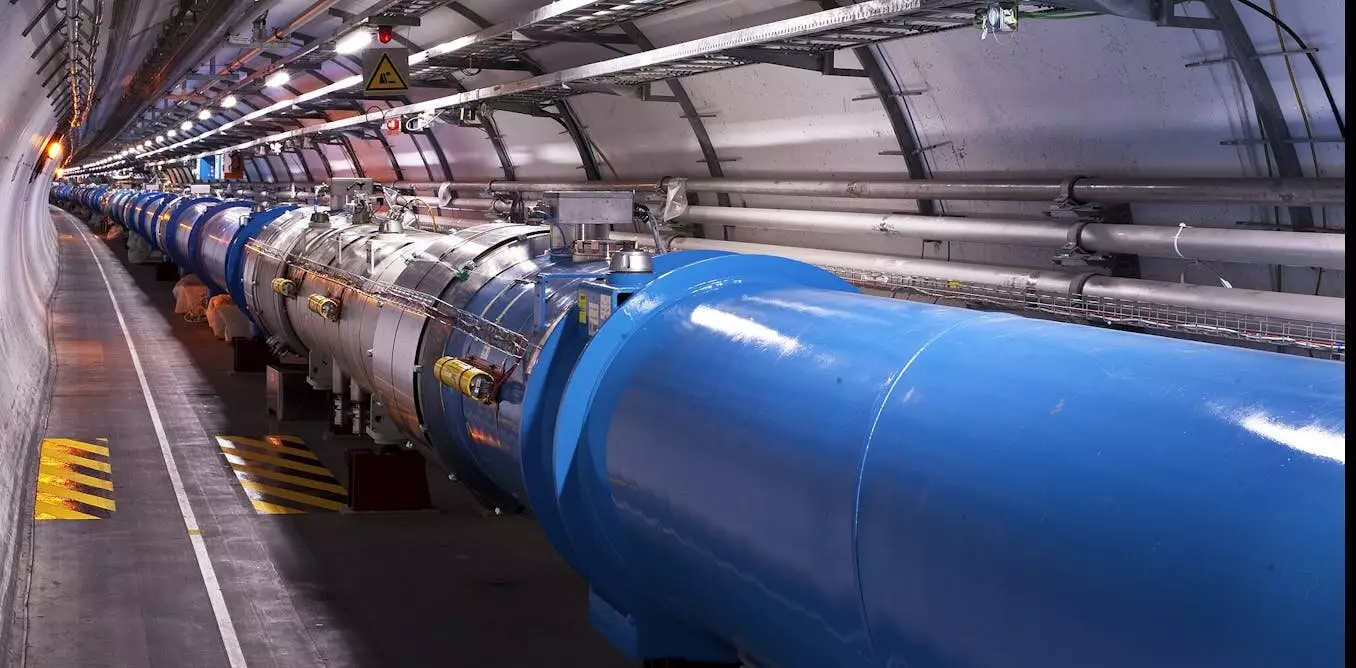At the European Organization for Nuclear Research, known as CERN, major physics experiments like the Large Hadron Collider require careful preparation each year for what can be compared to a winter hibernation. The complex machinery needs to be reset and calibrated to ensure accurate data collection and successful experimentation.
The first phase of waking up the LHC from hibernation involves testing the particle detectors using cosmic rays. These subatomic particles, created by cosmic rays hitting atoms in the atmosphere, help physicists verify that the detectors are working correctly and can record data accurately. While cosmic rays provide a natural testing ground, they are random and sparse, necessitating the need for additional testing sources.
To further test and calibrate the detectors, engineers at CERN create subatomic splashes by colliding protons into a collimator within the accelerator pipe. This process generates a large quantity of particles, known as a “beam splash,” which allows physicists to verify the detectors’ reaction and synchronization. The beam splash also tests the detectors’ ability to record and store data at the required speed, ensuring they are ready for data collection in the upcoming season.
One critical component that requires specialized testing is the Tile calorimeter in the ATLAS experiment, which measures the energy of particles like neutrons and protons. Unlike beam splashes, which create massive sprays of particles, the Tile calorimeter calibration specifically focuses on testing with muons. These heavier particles interact differently with detectors and can pass through multiple rows of sensors without losing energy, making them ideal for calibration purposes.
In a targeted test towards the end of March, CERN engineers adjust the collimator to generate muons that scrape the collimator’s surface, creating particles that hit the ATLAS experiment horizontally. Dedicated sensors detect these muons, allowing physicists to track their movement through the Tile calorimeter. This process ensures that the calorimeter is accurately collecting data as muons pass through each row of sensors.
After weeks of meticulous testing and calibration, the Large Hadron Collider is ready to accelerate protons to their maximum energy and collide them to initiate a new season of data gathering. This process sets the stage for potential new discoveries and deeper insights into the fundamental building blocks of the universe.
The careful and intricate process of restarting experiments at CERN showcases the meticulous work of physicists and engineers in preparing the machinery for data collection and analysis. By utilizing natural sources like cosmic rays and engineered subatomic splashes, researchers ensure that the detectors are functioning correctly and calibrated for accurate measurements. The collaboration and dedication of teams at CERN facilitate groundbreaking discoveries and advancements in our understanding of the universe.


Leave a Reply